Try This 10 Minute Wall Pilates Workout Routine
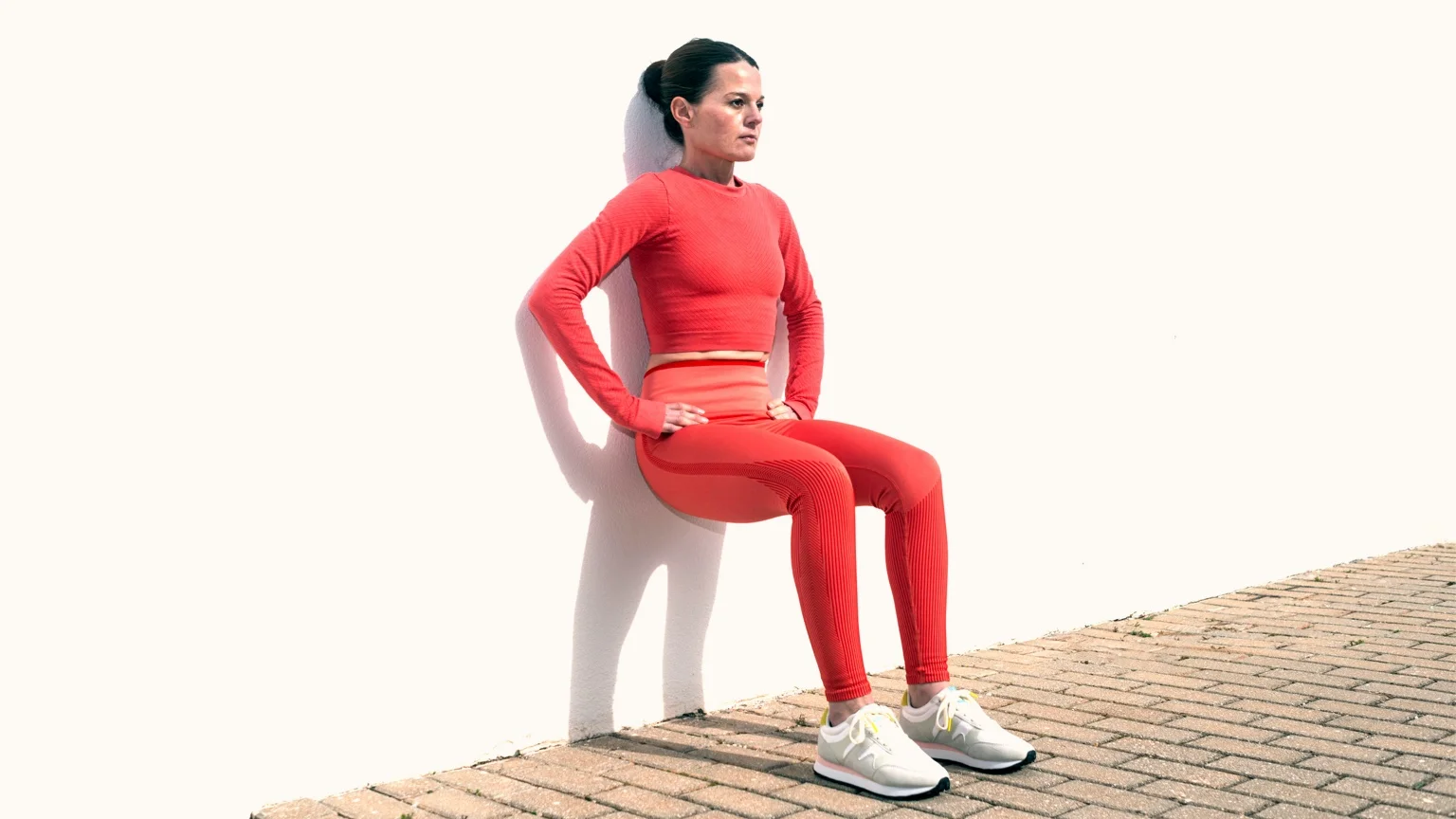
New
Build a workout routine for your personal fitness level and goals
Create a personalized workout plan using Gym Geek’s new AI tool. Gym Geek AI can generate a single workout or a structured routine for any fitness goal.
Powered by
Wall Pilates is quickly gaining popularity as the latest workout trend becomes viral on TikTok, YouTube and other social media platforms. This unique twist on Pilates requires no additional equipment – except for your Pilates mat and any wall – making it a great choice for your at-home workouts!
Wall Pilates can improve your flexibility, balance and core strength as part of a broader workout routine. Because it only uses low impact exercises, it’s a great workout for beginners.
Benefits of Wall Pilates
- Stability, balance and strength – Wall Pilates can help improve your stability, balance and strength. Although the floor and wall provides support, the exercises in this workout use your own bodyweight and focus on control of your hips, glutes and standing poses.
- Resistance – The wall acts both as an aid and as a form of resistance during Wall Pilates. Push your feet firmly against the wall both provides stability, but also adds resistance to moves like the Hip Bridge.
- Accessible at Home – Because Wall Pilates doesn’t require any special equipment, it’s an accessible workout at home for most people. All you need is a Pilates mat and some free space next to a wall. This form of exercise offers many of the same benefits as traditional Pilates, but without the additional costs.
10 Minute Wall Pilates Workout Routine
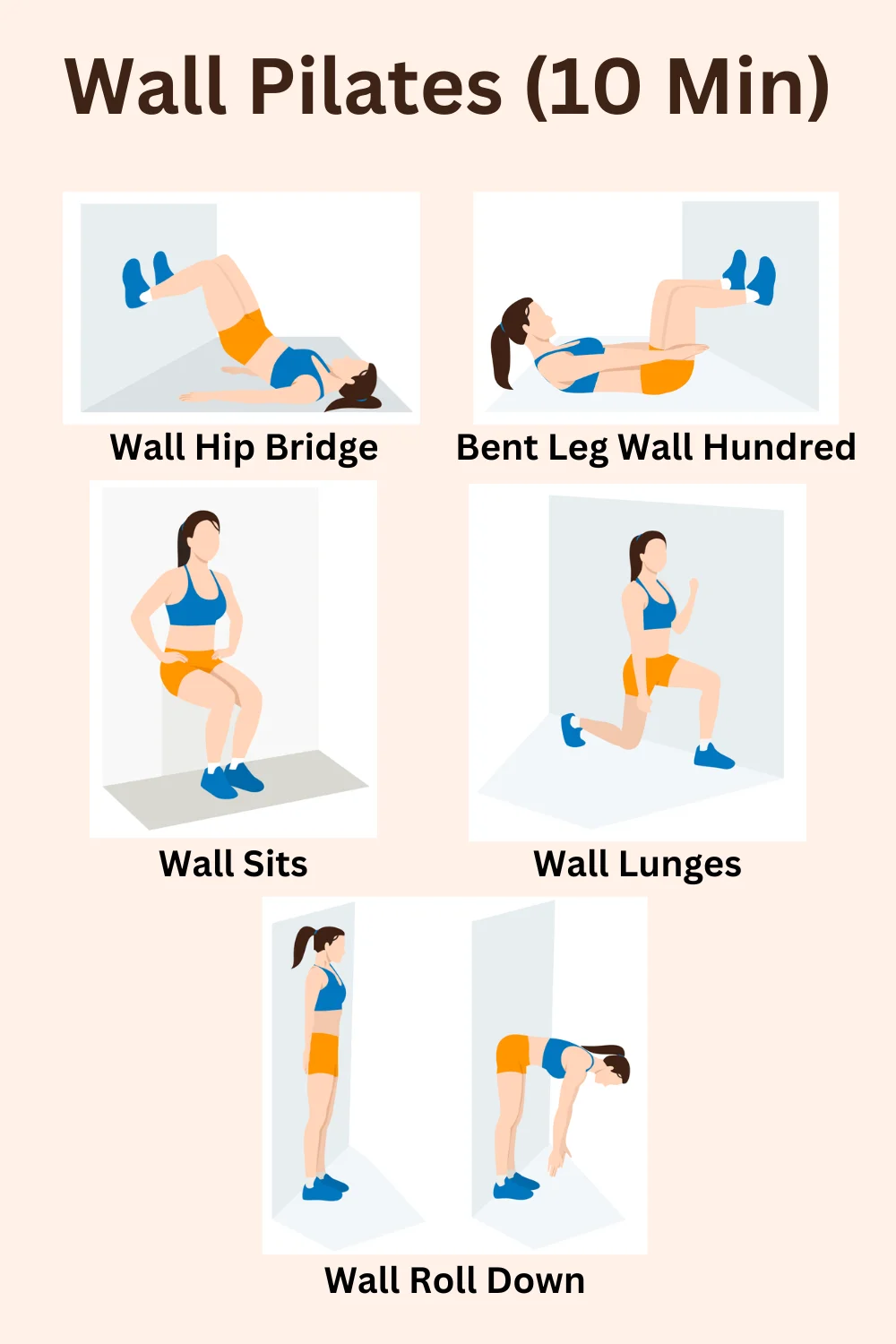
1. Wall Hip Bridge

Why: The Wall Hip Bridge adds an extra challenge to the traditional bridge movement because the wall adds more resistance. It’s a great move for strengthening and toning your glutes, hamstrings and core muscles. It also engages your lower back and hip flexors, making it a good lower-body workout as well.
How to do: Lie on your back with your feet hip-width apart on the wall. Your knees should be bent at a 90-degree angle. With your arms resting by your sides, press your feet into the wall and lift your hip slightly off the ground. Squeeze your glutes, and hold for a few seconds, then lower back to the starting position.
Read more: How to Do a Wall Bridge
2. The Bent Leg Wall Hundred

Why: The Bent Leg Wall Hundred primarily work your abs. It’s easier to perform that The Hundred in regular Pilates, because you have the wall for support. The key difference in form is that your knees are bent in this exercise rather than pointing straight and up.
How to do: Lie on your back with your feet flat against the wall. Keep your knees bent at a 90-degree angle. Extend your arms straight out in front, by your sides but lifted off the floor. Engaging your core, lift your head and shoulders off the mat and pump your arms up and down at a fast rate. Inhale for a count of 5, and exhale for another 5.
3. Wall Sits
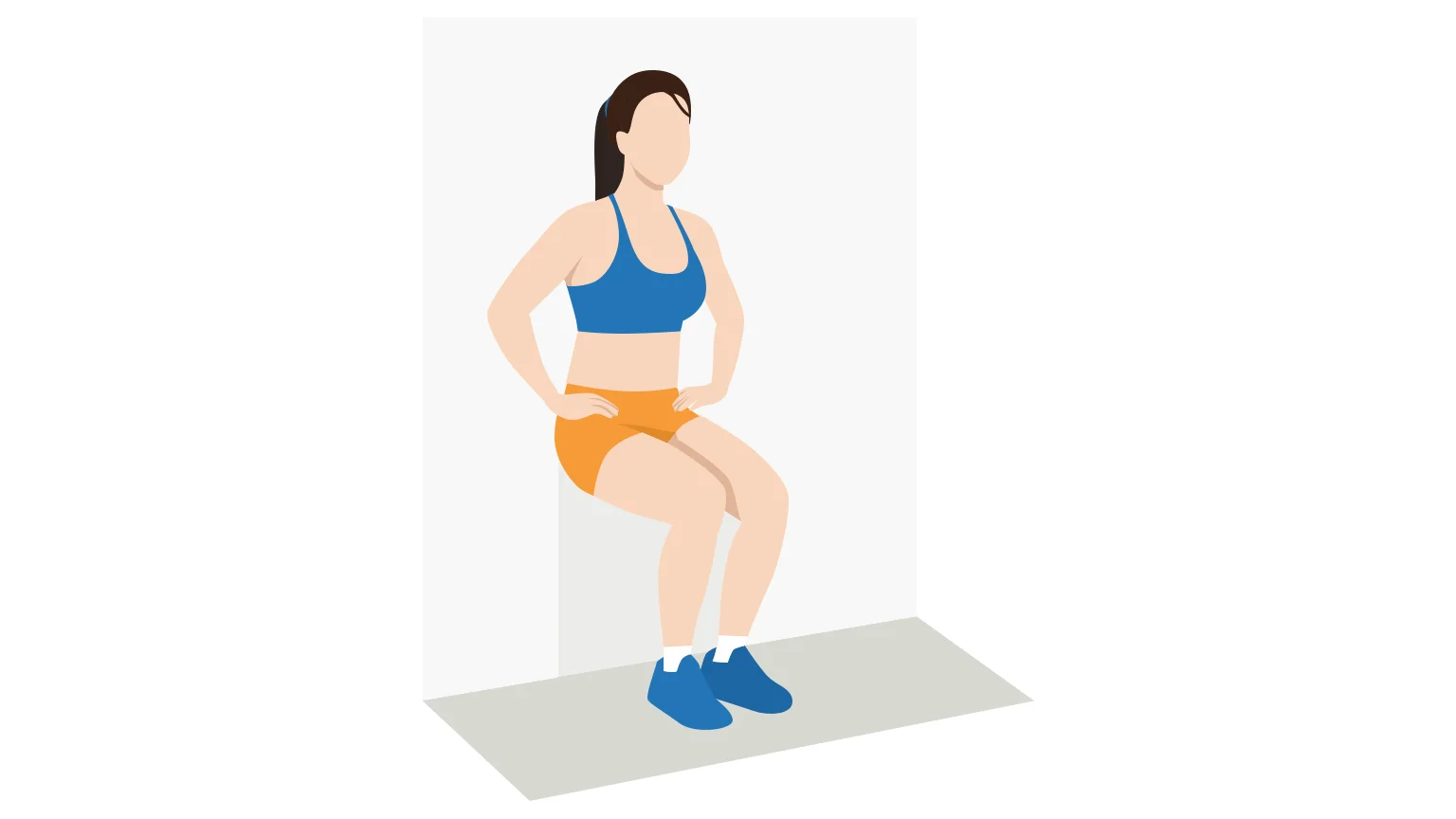
Why: Wall sits primarily work your quads, hamstrings and glutes, but they also engage your core, helping to improve your overall balance and stability. Because wall sits use the wall for support, they allow for a more controlled descent and ascent. This makes it easier for beginners to maintain proper form compared to free-bodyweight squats.
How to do: Stand with your back against a flat wall. Place your feet shoulder-width apart. Position your feet forwards until you are able to take a sitting position with your knees bent at a 90-degree angle. If you have the correct form, your knees will be directly above your ankles and will not extend beyond your toes. Hold for 20 seconds in this position, then push up by straightening your legs. Rest for 30 seconds, then repeat.
Read more: How to Do Wall Sits
4. Wall Marching Bridges
Why: Wall Marching Bridges work your glutes, hamstrings and core muscles. Where standard Pilates marching sees you lying flat and lifting one leg at a time, Wall Marching Bridges has your feet positioned on a wall. This adds more resistance to the workout and engages your muscles in a different way.
How to do: Lie down on your back and place your feet on the wall with your knees bent at 90 degrees. Lift your hips off the ground to create the bridge pose, pressing your feet into the wall. Keeping your core engaged, lift one foot off the wall and bring your knee towards your chest, then immediately place back down to the wall.
Watch: How to Do Marching Bridges
5. Wall Lunges
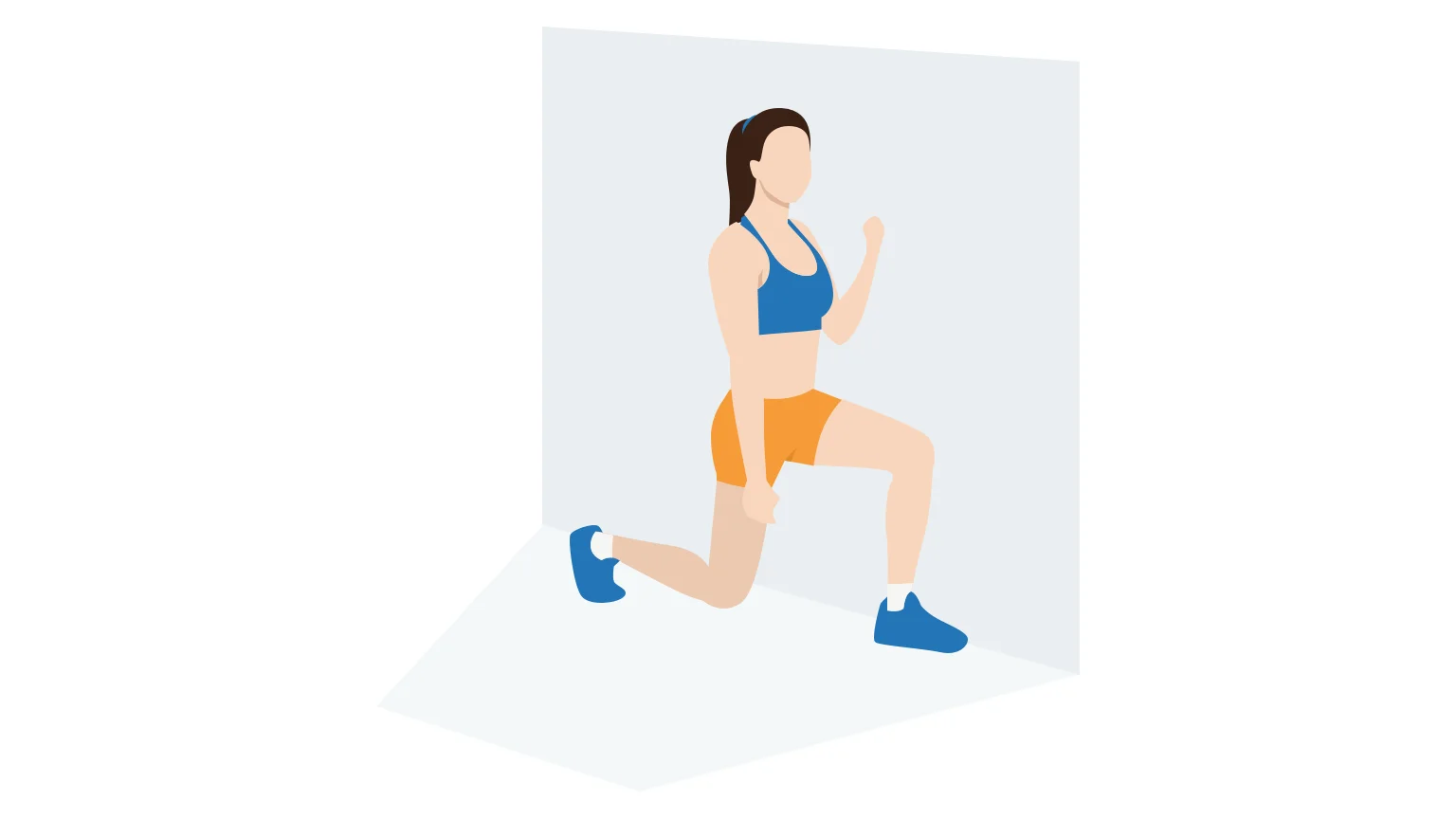
Why: Lunges can help strengthen your quads, glutes and hamstrings. Regular lunges require high levels of balance and stability, which makes them a more difficult exercise for beginners to perform with proper form. Wall lunges use the wall to provide support, making it a great option to consider if you are new to exercise or if have a lower body injury that needs support.
How to do: Stand with one side of your body against the wall. Holding the wall for extra support, step back with your leg furthest away from the wall, then drop into the lunge position. At the bottom of the lunge, your outer leg should be fully extended, and your inner leg should be bent 90-degrees at the knee. Return to the starting position and repeat for 30 seconds on each side.
Watch: How to Do a Wall Assisted Lunge
6. Wall Roll Down
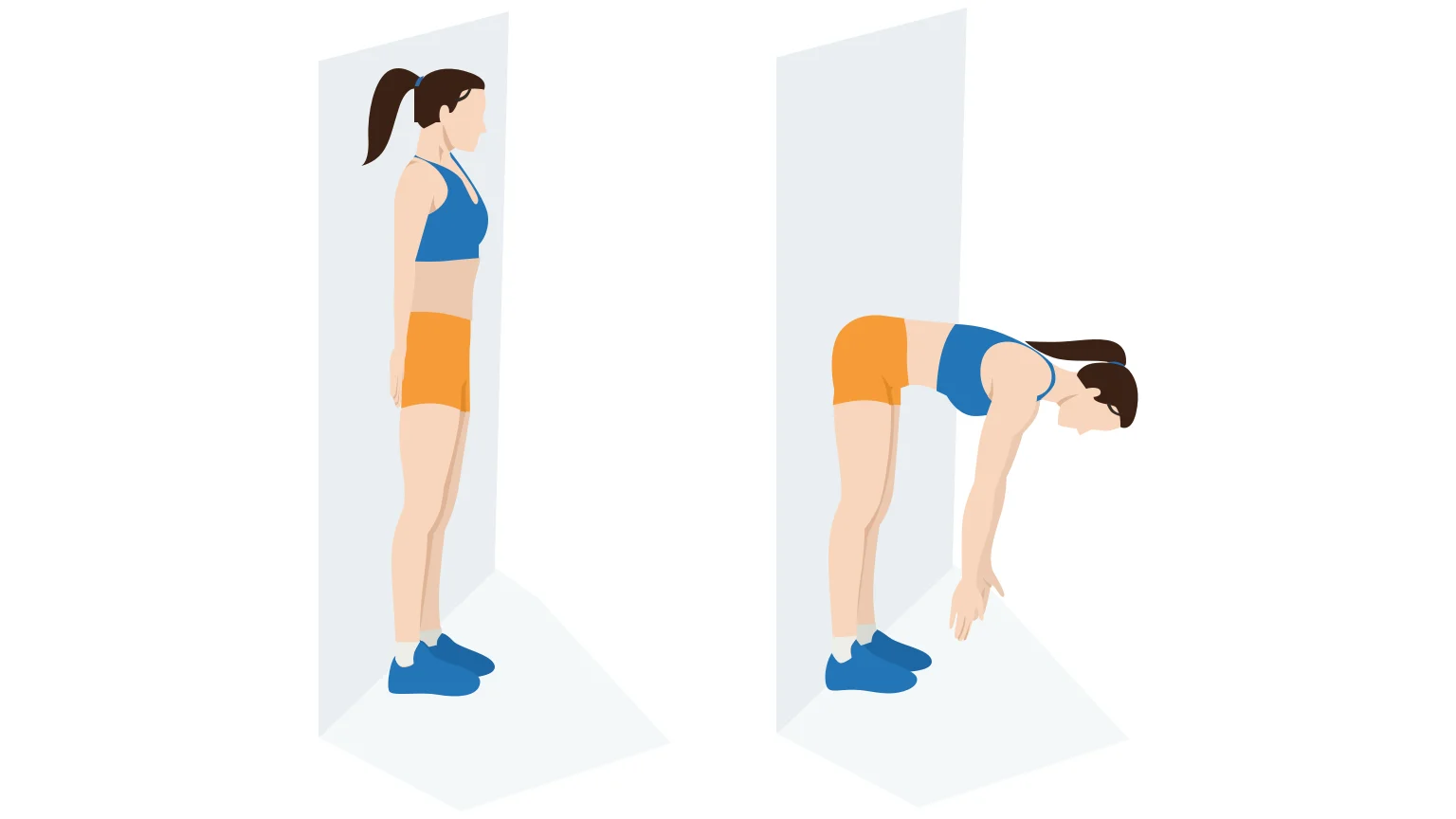
Why: The Wall Roll Down works your core and lower back muscles. It can also hit your glutes and hamstrings. Unlike regular roll downs, which require more balance, the Wall Roll Down benefits from your position against the wall for stability.
How to do: Stand with your back against the wall, with your feet hip-width apart. Inhale deeply. Then, exhaling slowly, start to roll down as if peeling your spine off the wall. Go down as far as you can, keeping your core engaged. Inhale at the bottom, then as you exhale, roll back up to the starting position.
Read more: How to Do a Wall Roll Down
